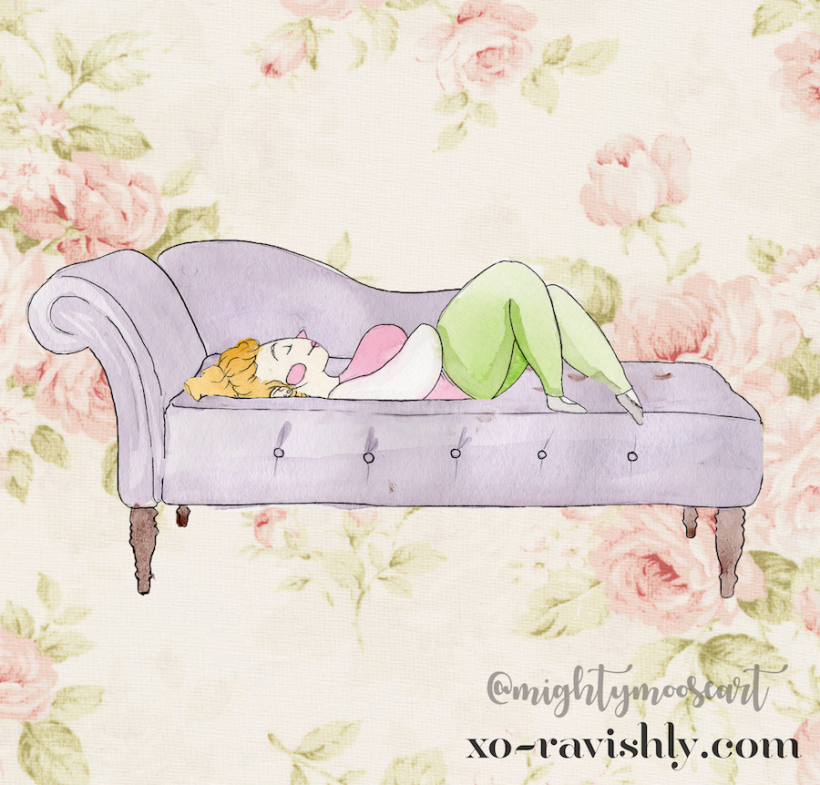
Remember that therapy is just one small part of your overall mental (and physical, because that mind-body shit is serious business) wellbeing.
For most of my life, therapy was as frustrating as it was helpful, often even more so. I was in therapy off-and-on for much of middle and high school, and while I’m all kinds of grateful for the privilege to have that resource so early on in my life, I ultimately learned more about what I didn’t want out of therapy than I did any lasting coping mechanisms or relaxation techniques.
I wish I’d been more assertive and proactive when I first started therapy, but to be fair, I was 14 and lacking a good portion of my frontal lobe. I was also in the middle of some real serious family strife and totally unequipped to deal with the chaos in my mind on top of the chaos in my home. Now that I have more independence and experience (and a more developed frontal lobe), I’m much more confident in discerning what works for my mental health and what doesn’t. Here are a few things I do that help me get the absolute most out of my therapy appointments:
1. Be picky.
This is something to keep in mind at the beginning of your therapy ~journey~, but also a great metric to measure your current and past therapy ventures by as well. Make a list of three things that are absolutely essential in your therapist. For some people, one of those requirements might be that they are covered by their health insurance. For others, having a therapist with a similar cultural background is incredibly important. No matter what three things you decide on, stick to them. This is your health we’re talking about, something often forgotten when it comes to treating that tricky organ hanging out between our ears. You deserve the right to a therapist who addresses your unique needs. Here were three things I knew I needed in a therapist:
— I wanted to work with a woman.
— I didn’t want to do CBT (more on that later)
— I wanted someone who focused on longterm trauma and chronic disorders
Everyone’s list is different. What matters is that you make the list. Like, literally write it down on a piece of paper and look at it. Hang it up on your bathroom mirror or fridge or water skiing equipment or wherever — just make sure it’s something you see every single day. Sit with your list for a while, picture what you want your therapy appointments to look and feel like. When you feel comfortable with what you want, begin your search by filtering possible therapists through your top three requirements.
Remember: everything else is negotiable, but these three things have to be there in order for you to move forward with a therapist. This is a big relationship you’re starting, and while flexibility is important in any relationship, so is compatibility. A short and simple list helps you focus your search, as well as take a deeper look at why you want a therapist and what you hope to get out of your time together.
2. Meet yourself where you’re at.
I mentioned above that when I first began my search for a new therapist, it was very important to me that her practice focused on something other than cognitive behavioral therapy. There are a lot of complicated reasons for this, none of them being that CBT is bad. I had spent a lot of time working with CBT in the past and found that it wasn’t working for me, though in my head it was more that I did not work for it. I would leave sessions feeling despondent and frustrated with myself, and it led to a warped understanding of the fundamentals of cognitive behavioral therapy.
I have a personality disorder characterized by extreme perfectionism — couple that with lifelong OCD, and you get a person who is very sensitive to the idea of being “wrong.” It is not that I don’t think I can ever be wrong; I know that I am fallible and flawed, just like the rest of us. It’s that I do not feel that I am allowed to be wrong — that being incorrect in any situation is a sign of moral weakness. This made CBT difficult for me, since the basic premise of treatment is to monitor and challenge your own thoughts. To my brain, that was interpreted as a need for censorship. Instead of interrogating my thoughts and feelings, I would punish myself for having them. I would berate myself for each and every neurosis or obsession, and when I found myself depressed after spending years working with a therapist on the same issues over and over, I figured it was my fault for being a bad patient.
In hindsight, I can see that I just wasn’t ready for CBT. I didn’t have enough control over my thoughts or compassion for my illness and myself to do the work that CBT demands. If I hadn’t asked to try something different, I never would have realized that. I’m now able to use skills from CBT as part of my everyday wellness, but that wouldn’t be possible without first recognizing my limitations — even if I couldn’t quite explain what those limitations were just yet.
3. Write in a journal.
Now, when I say, “write in a journal,” know that I mean that in the loosest sense. Journals do not work for everyone — not even close. Some of us have cognitive disabilities that make reading and writing stressors in and of themselves; some folks have chronic pain that makes the act of writing too physically taxing; some just don’t have the time or emotional energy to sit down and record their thoughts each day. All of these things are perfectly valid reasons for not keeping a traditional journal, but that doesn’t mean you can’t record the ongoings of your life in some form or another.
You can keep a digital journal, a visual journal, a private Instagram account, a dictionary full of flower pressings from your daily walks — there really are no limits. The important thing is that you find some sort of outlet for externalizing all the work you’re doing on the inside. It’s a way of saying, “I am here. This is really happening to me. This is how I feel about it. This is what I’m doing about it. Also, I petted a nice dog today.”
When you record your thoughts and feelings, you also validate them. You make them into something worth keeping a remembrance of, and that is powerful. Equally powerful is the ability to reference your past as you move through your present, a gift that regular journaling of any sort will give you time and time again.
4. Remember that therapy is just one small part of your overall mental (and physical, because that mind-body shit is serious business) wellbeing.
If you were to attend therapy every single week, it would amount to just under half of one percent of your week.
Sit with that for a second.
Half
Of one
Percent
When my current therapist told me that in one of our first sessions together, something amazing clicked for me: therapy was not by any means the only way I could be proactive about my health. Once I realized that, the half of one percent of my week spent in therapy became even more meaningful. I was able to use the things we discussed to create scaffolding for a much more holistic approach to my health.
#OCDame is a weekly column about chronic mental illness by Jenni Berrett. While she’s no doctor or counselor by any means, she does have extensive experience in being batshit crazy — which she doesn't think is as bad a thing as the world would lead you to believe. Each week she puts that ongoing experience to good use by writing things that have been stuck inside her heart for too long in the hopes that they will help unstick somebody else’s heart, too.
Find more articles from OCDame by clicking here. You can also shoot Jenni an email (at any time and about any thing, just so long as you remember the whole aforementioned Not Being A Doctor situation) at jennib@ravishly.com.







